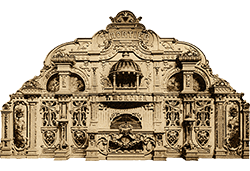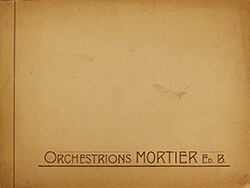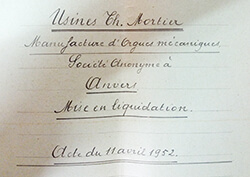11 March 1855
Birth of Theophile Mortier
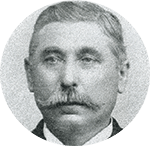 Theophile Mortier is born in Oostkamp, near Bruges.
Theophile Mortier is born in Oostkamp, near Bruges.
11 March 1855
1877
Theophile moves to Antwerp
16 June 1877
Theophile gets married
Theophile marries Joanna Vermeulen en becomes an innkeeper.
16 June 1877
1884
Theophile opens a dance hall
In the Bredastraat, behind the houses with nos. 54 and 56, Theophile has a dance hall constructed: 'Nieuwe Variétés'. There he places automatically playing organs, mostly built by Gavioli in Paris.

1895
Theophile starts his own organ company.
1895
24 July 1905
Guillaume Bax joins the Mortier firm
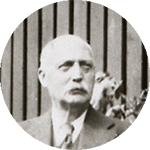 Guillaume Bax joins the Mortier firm. As a foreman his decisions are of crucial importance for the development of the organs. His sons August, Jules and Louis will also be employed by Mortier.
Guillaume Bax joins the Mortier firm. As a foreman his decisions are of crucial importance for the development of the organs. His sons August, Jules and Louis will also be employed by Mortier.
26 August 1919
Limited Company
Mortier decides to handle matters in a more professional way and the firm is transformed into a Limited Company.

26 August 1919
1 December 1925
Roll-playing orchestrions
The firm decides to build piano-orchestrions playing on rolls but these are not successful.
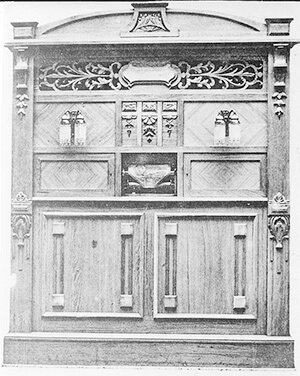
1927
Jazzband organs
A new type of dance organ, the 'Jazzband organ', is introduced. These organs have a deviating scale: 12 bass and 5 accompaniment notes, 19 notes on countemelody, 23 on melody and extensive percussion. Basses, accompaniments, countermelody and melody actually form one chromatic range of notes. However, the jazzband organs were not successful: presumably only about six of them were built.
1927
1927
Orchestrions
The firm now concentrates on the sale of orchestrions and therefore has two catalogues printed: one in postcard size and a more luxurious version with a cover printed in colour. The sale of orchestrions will show an upward trend.
1929
Crisis
The Mortier firm doesn't escape from the worldwide crisis: the sale of instruments is simmering. Some of the staff members are dismissed. To turn the tide, the firm starts a sales department with agents, amongst whom Oscar Grymonprez.
1929
1934
Accordions
Mortier starts to integrate accordions into his dance organs. During modernisations, many organs are also equipped with an accordion. It is noteworthy that these accordions often had two piano keyboards. They were often installed in an 'accordion box' attached to the front of the organ.
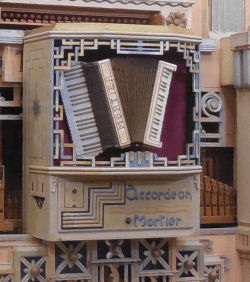
28 January 1939
Electrosax
Mortier is granted the patent on an invention entitled 'Installtion to amplify acoustic vibrations'. The invention consists of a microphone registering the vibrations of a vibratone pipe. The microphones are connect to an amplifier which sends the sound to a speaker mounted inside the saxophone on the façade. Mortier marketed this invention under the name 'Electrosax'.
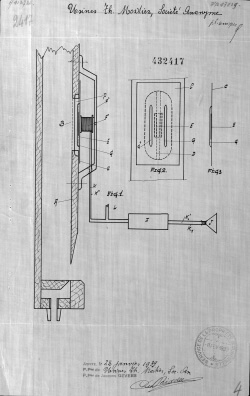
28 January 1939
Second World War
The war years
During the second World War the production was nearly at a standstill: only a few orchestrions were delivered. A part of the factory buildings was rented to manufacture razor blades.
28 December 1944
Decease of Theophile Mortier
Theophile Mortier dies on 28 December 1944. He is buried in Merksem.
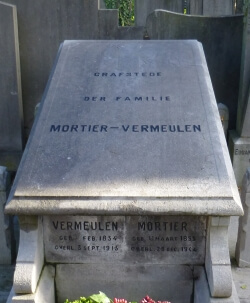
28 December 1944
1948
Last large dance organ
In 1948 Mortier manufactures the last large dance organ: the 112-key 'The Rambler' (#1092) for organ renter Frans De Maeyer.
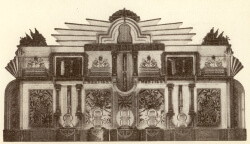
11 April 1952
Liquidation
The firm is officially put into liquidation. Whatever remains of materials etc. is sold. So the arranger Louis Somers buys a punching machine from the inventory.
11 April 1952
7 May 1954
René Van Den Bosch
On 7 May 1954 René Van Den Bosch officially acquires the trade name 'Mortier'. For many years he will build outstanding (semi-)electronic organs with the name 'Mortier' (without 'Th.') on the façade. He also rebuilt numerous instruments.
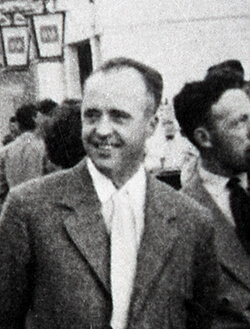
2019
The Mortier Story - the book
In 2019 'The Mortier Story' is published, the long-awaited book about the history of the Mortier family and firm and the instruments built by the Mortier firm.

2019
